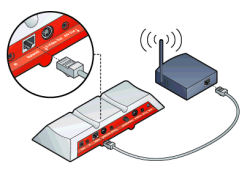
The Slingbox TV signal sender / media streamer is the most impressive gadget I have had the pleasure of stumbling across in 2008, having marvelled at the way such a simple device could reduce arguments over who's turn it was to choose the channel in a TV-obssessed family household.
The Slingbox allows you to stream TV programs directly to an internet connected PC using your broadband connection. The streamed TV signal is delivered by connecting the Slingbox directly to your TV, satellite receiver or cable box. This sounds far too simple to be true, but it genuinely is. The Slingbox is a dream to setup and use, I’ve even heard rumors that my wife was able to configure our device in my absence, but I’m not convinced she didn’t call a ‘techi friend’ to do this for her! It is also an incredibly reliable device for this type of media streaming and can even send freeview TV signals without the need for direct connectivity to a TV. Although it's a superb innovation which delivers clean, seamless images from your TV to PC straight across your broadband connection, the Slingbox does however come with only one minor flaw. It would be even more impressive if 'version two' came with one-to-many connectivity.
Sling Media, the maker of Slingbox, says it's all about staying connected to your favorite programs, wherever your life takes you. Choose the SlingboxTUNER, SlingboxAV, or SlingboxPRO, depending on your needs, and the type of programming and equipment you have at home.
How Slingbox Works

The Slingbox device plugs into your television source (cable, satellite, set-top box or DVR) using a coaxial, component, composite, or S-video cable. The network connector on the Slingbox then connects to your Internet router with a standard ethernet cable, or wirelessly with a special bridge adapter. An infrared cable from the Slingbox, pointed at your TV or DVR gives you the ability to remotely control them from your computer. No matter how you connect the Slingbox, you'll need to install the SlingPlayer interface software on your computer or portable wireless device, in order to view the video programming remotely.







